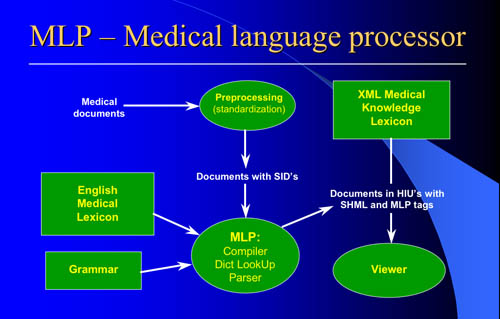The current English Medical Lexicon, emlex_101, has as its base the English lexicon as described in Natural Language Information Processing: A computer grammar of English and its applications [Sager, 1981]. The grammaticul subclasses (lexical attributes), including some 60 possible verb objects, are defined there in Appendix 3. To these attributes have been added ca. 50 medical sublanguage attributes (H-classes) listed and defined here under the heading "Medical Syntactic Classes". These attributes are used throughout the processing, to guide the parsing, to resolve ambiguities, to decide which Information Format (output representational structure) to use, and finally, to direct the mapping of sentence words into the appropriate positions in the Information Format.

Note from Naomi Sager: I wish to express my appreciation to Dr. David Rothwell, M.D. for patiently reviewing with me (and correcting) the lexical entries for the classes H-DIAG, H-INDIC, H-PTAREA, H-PTFUNC and H-PTPART.
LEXICAL LOOKUP provides several ways to view the contents of the lexicon.
- One can see the H-classes and XML tags of an individual word by typing the target term into Enter Word: box (cf. List of Medical Syntactic Classes), or
- one can see all words in the dictionary having a certain class by typing the target Part of Speech or Healtcare syntactic class, or a medical tag into Enter Class: box (cf. List of Medical Tags). For example, to see how the class of prepositions has been extended for medical processing (e.g. apart from, as a consequence of) ask for class "P". Two classes of special interest are H-NEG and H-MODAL. H-NEG contains words (including verbs) that express negation (e.g. avoid, cancel, deny); H-MODAL contains words that express lack of certainty (e.g. possibly, probable) and words that imply that the assertion is not, or is not yet, an attested fact (e.g. advise, allege, attempt, claim, defer).